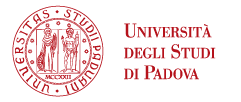Parasitic diseases in aquatic animals WITHOUT GRANT 2025/2026
The Mediterranean Sea is considered as a marine biodiversity hotspot. Large vertebrates, such as apex-predators, are involved as definitive hosts in the life cycle of many heteroxenous parasites, while invertebrate and fish mostly as intermediate and paratenic hosts. Molluscs and gasteropods have been recently identified as intermediate host for helminth parasites affecting sea turtles and sea birds in mediterranean Sea. Other highly virulent parasites can cause severe mortality events in wild and farmed mollusc populations. The
dinoflagellate P. olseni is a generalist pathogen able to infect different bivalve species, possibly passing from clams to oysters and mussels. Moreover, haplosporidians are highly pathogenic parasites for marine invertebrates with high mortality rates caused, for example in different oyster species, by Haplosporidium nelsoni, Bonamia ostreae and Bonamia exitiosa. Haplosporidium pinnae was been recently described in fan mussels in Spain and Italy, associated with mass mortality in this endangered species.
The aim of this research topic is to monitor the bivalve populations of the Adriatic Sea in order to detect virulent parasitic infection both in wild and farmed animals, studying their biology and clarifying phylogenetic aspects and impact on the host.
Five publications related to the Research Topic for the candidate interview:
- Carella F. , Antuofermo E. , Farina S. , Salati F. , Mandas D. , Prado P , Panarese R. , Marino F. , Fiocchi E. , Pretto T. , De Vico G. (2020). In the Wake of the Ongoing Mass Mortality Events: Co-occurrence of Mycobacterium, Haplosporidium and Other Pathogens in Pinna nobilis Collected in Italy and Spain (Mediterranean Sea). Frontiers in Marine Science, 7. Doi: 10.3389/fmars.2020.00048
- Carella F, Fernandez Tejedor M, Villari G, Andree KB and De Vico G (2023) The endoparasite Perkinsus olseni affecting the Mediterranean mussels (Mytilus galloprovincialis) in the Italian and Spanish waters: A new possible threat for mussel aquaculture and wild animal population. Front. Mar. Sci. 10:1116837. doi: 10.3389/fmars.2023.1116837
- Ward G.M., Feist S.W., Noguera P., Marcos-López M., Ross S., Green M., Urrutia A., Bignell J.P., Bass D. (2019). Detection and characterisation of haplosporidian parasites of the blue mussel Mytilus edulis, including description of the novel parasite Minchinia mytili n. sp.Dis. Aquat. Org. Vol. 133: 57–68, 2019 https://doi.org/10.3354/dao03326
- Panarese R, Tedesco P, Chimienti G, Latrofa MS, Quaglio F, Passantino G, Buonavoglia C, Gustinelli A, Tursi A, Otranto D. Haplosporidium pinnae associated with mass mortality in endangered Pinna nobilis (Linnaeus 1758) fan mussels. J Invertebr Pathol. 2019 Jun;164:32-37. doi: 10.1016/j.jip.2019.04.005. Epub 2019 Apr 23. PMID: 31026464.
- Bommarito C, Wahl M, Thieltges DW, Pansch C, Zucchetta M, Pranovi F (2022). Biotic and abiotic drivers affect parasite richness, prevalence and abundance in Mytilus galloprovincialis along the Northern Adriatic Sea. Parasitology 149,15–23. https:// doi.org/10.1017/S0031182021001438
Tutor: Prof. Federica Marcer
mail: federica.marcer@unipd.it






